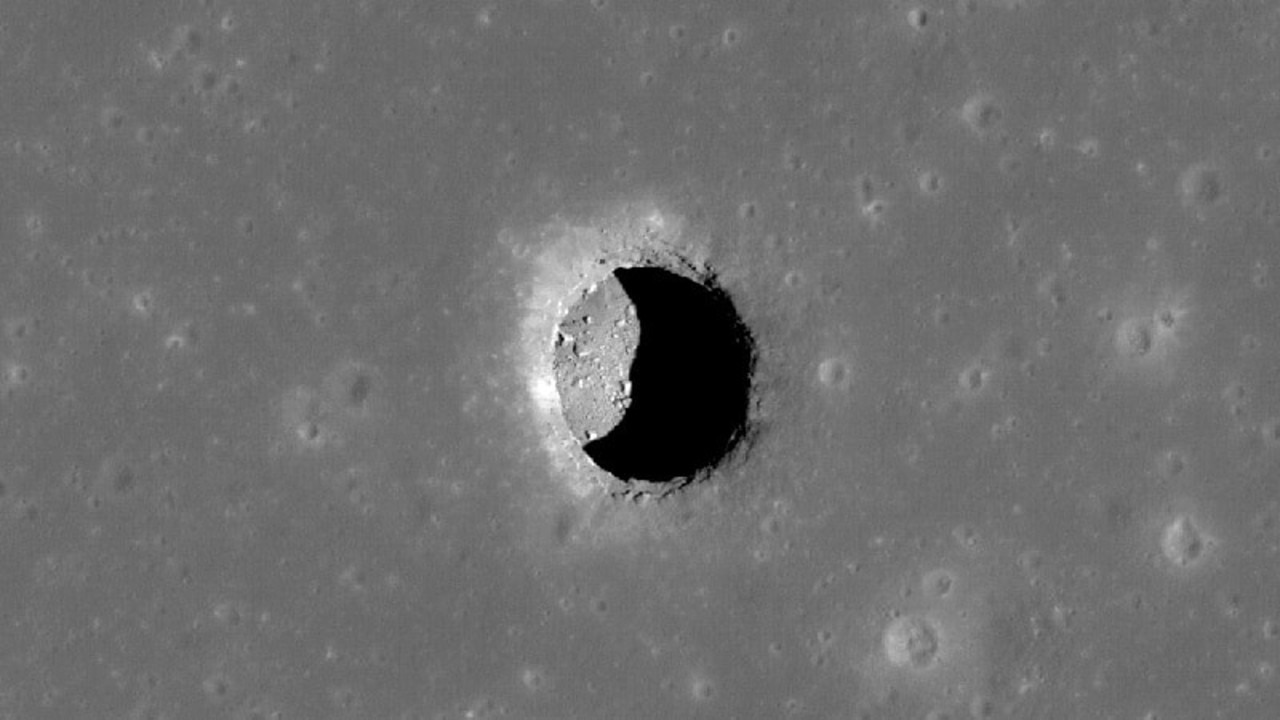Moon cave possible ‘location for habitation’ for future astronauts: scientists
Scientists have unearthed an expansive underground moon cave beneath an open pit that could potentially house human visitors.
Scientists have unearthed a significant discovery on the moon: an expansive underground cave beneath an open pit, which could potentially serve as a future base for astronauts.
This lunar tunnel, the first deemed accessible to humans, has been hailed as a breakthrough in lunar exploration.
The cave lies beneath a pit approximately 100 meters wide in the Sea of Tranquillity, a prominent dark region on the near side of the moon, visible from Earth with the naked eye. This lunar region holds historical significance as the landing site of Apollo 11, where Neil Armstrong and Buzz Aldrin became the first humans to walk on the moon in 1969.
Researchers estimate the cave to be between 30 and 80 meters long, about 45 meters wide, and located 130 to 170 meters below the lunar surface.
Unlike previous lunar caves, this one features an entry point, making it particularly noteworthy.

The discovery coincides with NASA’s plans to launch its first crewed mission to the moon in over five decades. The moon’s surface is notoriously inhospitable to human life, exposed to high levels of cosmic radiation, frequent meteorite impacts, and extreme temperatures. However, experts believe underground caves could offer a more viable solution for habitation.
“For the first time, we have located and accurately mapped a cave that is actually accessible from a pit on the lunar surface,” Leonardo Carrer, an assistant professor at the University of Trento in Italy, said.
“We were able to obtain the first 3D model of a part of the cave’s actual shape.
“Building a base on the surface of the moon requires highly complex engineering solutions, which may be less effective than what is already provided by nature.”
Lorenzo Bruzzone, a professor at the University of Trento, added, “These caves have been theorised for over 50 years, but it is the first time ever that we have demonstrated their existence.”

The moon’s surface is subjected to cosmic radiation up to 150 times more potent than Earth’s, and temperature extremes range from 127C to -173C. Previous studies have indicated that underground caves maintain a more stable average temperature of around 17C, creating potentially suitable conditions for human habitation.
Commenting on the study, Mahesh Anand, a professor of planetary science and exploration at the Open University, said, “The future exploration of the moon through extended human presence would require protection from the harsh environment and micrometeoroid impacts.”
“In that context, these underground structures could provide a suitable location for habitation purposes.”
Underground lunar caves are typically derived ancient lava tubes formed by volcanic activity billions of years ago.
Moon pits generally form when the ceilings of these lava tubes collapse.
The findings, published in the journal Nature Astronomy, were derived from a reanalysis of radar data collected by NASA’s Lunar Reconnaissance Orbiter in 2009.





